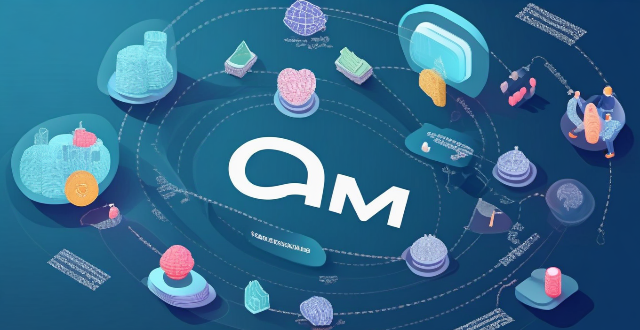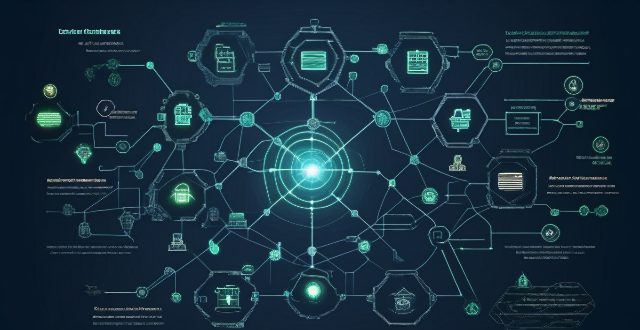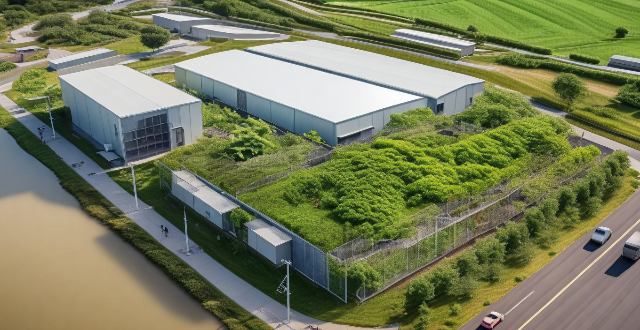Defi Ring

How does DeFi differ from traditional finance ?
DeFi is a financial system based on blockchain technology and smart contracts, while traditional finance relies on intermediaries like banks. Key differences include centralization vs decentralization, accessibility, transparency, security, cost efficiency, and regulation. DeFi offers advantages such as wider accessibility, higher transparency, and lower fees, but also comes with risks. It's important to research and consult professionals before making financial decisions.

Are there any risks associated with investing in DeFi ?
Investing in DeFi comes with risks such as smart contract vulnerabilities, impermanent loss, regulatory uncertainty, and lack of transparency. It is important for investors to carefully evaluate these risks before investing in any DeFi project.

How do DeFi tokens work ?
Decentralized Finance (DeFi) tokens are digital assets operating on blockchain technology, designed to facilitate financial transactions without intermediaries. These tokens can represent various assets like currencies, commodities, and cryptocurrencies. Key features of DeFi tokens include decentralization, smart contracts, and interoperability. They work through token issuance, utility within their respective projects or platforms, and governance mechanisms allowing holders to vote on important decisions related to the project's development. Benefits of DeFi tokens include accessibility, transparency, and innovation in financial products and services.

What is decentralized finance (DeFi) and how does it work ?
Decentralized finance (DeFi) is a financial system based on blockchain technology that operates without intermediaries like banks. It is transparent, borderless, permissionless, and interoperable. The core components of DeFi are smart contracts, cryptocurrencies, decentralized applications, and blockchain infrastructure. Users can access DeFi platforms through wallets, provide collateral for loans, earn interest by depositing their cryptocurrencies into lending platforms, trade assets peer-to-peer, get insurance against risks associated with smart contracts and cryptocurrency holdings, and have voting rights within the ecosystem. However, DeFi faces challenges such as scalability issues, regulatory uncertainty, security risks, and user experience complexity. Despite these challenges, DeFi has immense potential to democratize finance and provide inclusive solutions.

How can I get started with decentralized finance ?
Topic Summary: The text provides an overview of Decentralized Finance (DeFi) and its benefits, such as transparency, accessibility, efficiency, and innovation. It outlines steps for getting started with DeFi, including self-education on cryptocurrencies and blockchain, setting up a crypto wallet, acquiring cryptocurrency, connecting to a DeFi platform, exploring DeFi services like lending, borrowing, liquidity providing, yield farming, and tokenization, and practicing safe DeFi habits. The text emphasizes the importance of risk management, security, and continuous learning in navigating the evolving world of DeFi.

Is decentralized finance regulated by governments or financial institutions ?
The regulation of decentralized finance (DeFi) is a complex issue that involves both government and financial institutions. Governments can regulate DeFi indirectly through tax laws and anti-money laundering/know your customer (AML/KYC) laws, while also taking enforcement actions such as investigations, sanctions, and fines. Financial institutions may engage in self-regulation by establishing industry standards and best practices, building bridges with traditional finance, and offering insurance products tailored for DeFi risks. As the DeFi ecosystem continues to grow, it is likely that both government and financial institution regulation will continue to evolve.

What are the benefits of using decentralized finance ?
Decentralized finance (DeFi) is a sector within the cryptocurrency space that aims to create an open-source, permission-less, and transparent financial service ecosystem using blockchain technology. It offers several benefits over traditional financial systems, including increased accessibility, lower costs, greater transparency, enhanced security, programmable money, improved efficiency, and financial inclusion. By eliminating intermediaries and reducing overhead costs, DeFi makes financial services more affordable and accessible to a wider audience. Its transparent ledger system reduces fraud and increases trust among participants, while its secure blockchain networks protect user funds. DeFi also enables programmable money, allowing for customized financial products and services, and improves efficiency by streamlining transaction processing. Ultimately, DeFi has the potential to revolutionize finance by democratizing access to essential financial services for underbanked populations and bridging the gap between developed and developing countries in terms of financial access.

How secure is decentralized finance compared to traditional finance ?
The text provides a comparative analysis of the security aspects of decentralized finance (DeFi) and traditional finance (TradFi). DeFi relies on blockchain technology for peer-to-peer transactions, while TradFi operates through centralized institutions. Both systems have unique security features and risks, with DeFi offering transparency and automated contract execution but facing smart contract vulnerabilities and lack of regulatory clarity. TradFi benefits from regulatory oversight and physical security measures but is susceptible to systemic risks and cybersecurity threats. The choice between DeFi and TradFi depends on individual preferences and risk tolerance, and it's crucial to stay informed about new developments in the evolving financial landscape.

What are some popular DeFi platforms ?
Summary: The text provides an overview of popular DeFi (decentralized finance) platforms, including Uniswap, Compound, MakerDAO, Aave, and Curve Finance. Each platform has unique features that enable users to trade, lend, borrow, or earn interest on their crypto assets without intermediaries. These platforms utilize various models such as automated market makers, over-collateralization, flash loans, and innovative algorithms to facilitate transactions and maintain stability in a decentralized environment.

How can I fix a leaky faucet at home ?
Fixing a leaky faucet is a common household problem that can be solved with a few simple tools and steps. Here's how you can do it: ## Supplies Needed: * Wrench or pliers * Screwdriver * New washer or O-ring (depending on the type of faucet) * Pipe tape or thread sealant ## Steps to Fix a Leaky Faucet: ### 1. Turn Off the Water Supply Before starting any work on the faucet, turn off the water supply to the sink. This will prevent any accidental flooding while working on the faucet. ### 2. Remove the Handle Use a wrench or pliers to remove the handle of the faucet. Be careful not to damage the surrounding area while doing this. ### 3. Remove the Valve Stem Once the handle is removed, use a screwdriver to remove the valve stem from the faucet body. The valve stem is the long metal rod that goes into the faucet body. ### 4. Replace the Washer or O-ring The washer or O-ring is located at the bottom of the valve stem. If it is damaged or worn out, replace it with a new one. Make sure to choose the correct size and type for your faucet. ### 5. Reassemble the Faucet Once you have replaced the washer or O-ring, reassemble the faucet in reverse order of disassembly. Apply pipe tape or thread sealant to the threads before tightening them to prevent leaks. ### 6. Test the Faucet Turn on the water supply and test the faucet to make sure it is no longer leaking. If it is still leaking, check to see if all connections are tight and if there are any other issues with the faucet.

What is the future of blockchain beyond cryptocurrency ?
This article explores the potential applications of blockchain technology beyond cryptocurrency, highlighting key areas such as decentralized finance (DeFi), supply chain management, healthcare, government services, and intellectual property rights management. It emphasizes how blockchain can improve transparency, security, efficiency, and accessibility in these sectors through features like peer-to-peer transactions, smart contracts, tokenization, traceability, interoperability, data privacy, identity management, public records storage, voting systems, proof of ownership, streamlined licensing, and fraud prevention. The article concludes by stating that the future prospects of blockchain technology are vast and promising, offering numerous opportunities for innovation and transformation across various industries.

What are the best home security systems available in the market ?
Home security systems have become an essential part of modern homes, providing peace of mind and protection against burglaries, fires, and other emergencies. With the advancements in technology, there are several home security systems available in the market that offer a wide range of features and benefits. In this article, we will discuss some of the best home security systems available in the market.

What are some innovative smart home devices that can be controlled by smartphones ?
Innovative smart home devices controlled by smartphones offer enhanced convenience and energy efficiency. These include smart light bulbs like Philips Hue and LIFX, smart thermostats such as Nest and Ecobee, smart locks like August Smart Lock and Yale Assure Lock, smart security cameras including Arlo Pro and Ring Video Doorbell, smart speakers and assistants like Amazon Echo and Google Nest Audio, smart plugs and switches such as WeMo Mini Smart Plug and TP-Link Kasa Smart Wi-Fi Switch, smart refrigerators like Samsung Family Hub Refrigerator and LG InstaView Refrigerator, and smart air quality monitors like AirVisual Pro and Dyson Pure Cool Link.

What is the future of cryptocurrency ?
The future of cryptocurrency is uncertain but will be shaped by trends like decentralization, adoption and integration, regulation and legal clarity, and innovation.

How can I plan a successful wildlife safari trip ?
Planning a successful wildlife safari trip requires careful research, hiring a reputable tour operator, packing appropriately, and being prepared for unexpected circumstances. Consider factors such as destination selection, weather conditions, itinerary inclusions, appropriate clothing, essential items, flexibility, and safety guidelines to ensure a safe and enjoyable experience while exploring the beauty of nature's wildest creatures.

How can education raise awareness about climate change and environmental issues ?
Education can play a crucial role in raising awareness about climate change and environmental issues by integrating these topics into the curriculum, promoting hands-on learning, encouraging critical thinking and problem-solving, fostering collaboration and partnerships, and implementing effective assessment and feedback mechanisms. By empowering students with knowledge and skills, educators can help them make informed decisions and take action to protect our planet.

What are the best smart home gadgets for improving daily life ?
Smart home gadgets offer convenience and efficiency in daily life. Some of the best include smart speakers like Amazon Echo and Google Nest Audio, smart light bulbs like Philips Hue and Lifx Mini White, smart thermostats like Nest Learning Thermostat and Ecobee SmartThermostat, smart security cameras like Arlo Pro 3 and Ring Video Doorbell, smart locks like August Smart Lock and Yale Assure Lock, smart plugs and power strips like TP-Link Kasa Smart Plug and Wemo Insight Switch, and smart kitchen appliances like Instant Pot Duo and Hamilton Beach Smart Coffee Maker. Incorporating these gadgets into your home can increase convenience, improve security, and better manage energy consumption.

What equipment do I need to start making unboxing videos ?
To start making unboxing videos, you'll need: 1. A camera or smartphone with at least 1080p resolution, image stabilization, and manual settings for clear, stable footage. 2. A tripod or gimbal to ensure steady shots and easy adjustments. 3. A microphone that provides clear audio and is easily connectable to your recording device. 4. Lighting equipment like softboxes, LED ring lights, and reflectors for even illumination. 5. A simple, clean background that is consistent across videos for brand recognition. 6. User-friendly editing software with features like color correction and audio mixing. 7. Extra accessories such as high-speed memory cards, spare batteries, and lens cleaning kits. 8. Props and tools for unboxing, including a letter opener, gloves, and measurement tools. Remember, while having the right equipment is crucial, your creativity, presentation skills, and consistency in publishing content are also key factors in the success of your unboxing channel.

In which regions of the world are earthquakes most common, and why ?
**Earthquakes: Understanding the Most Common Regions and Their Causes** Earthquakes are natural disasters that can occur worldwide but are most common in specific regions due to tectonic activities. The theory of plate tectonics explains how Earth's crust is divided into plates that interact through processes like subduction, collision, and separation, causing seismic activity at their boundaries. Major earthquake-prone regions include the Pacific Ring of Fire, the Himalayan Belt, the Mediterranean-Himalayan Belt, South America, and New Zealand. These areas experience frequent and intense earthquakes due to their locations along multiple convergent plate boundaries and active subduction zones. Factors contributing to high seismic activity include plate boundaries, subduction zones, transform faults, and volcanic activity. Understanding these patterns is crucial for earthquake preparedness and mitigation efforts.

How does cryptocurrency affect the global economy ?
The rise of cryptocurrency is having a significant impact on the global economy. Its decentralized nature challenges traditional monetary policy, increases financial inclusion for underserved populations, spurs innovation in the financial sector, and raises regulatory challenges. However, it also presents risks such as fraud and scams, as well as environmental concerns due to high energy consumption in mining.

What strategies are effective in maintaining and expanding urban green spaces ?
Strategies for maintaining and expanding urban green spaces include advocacy, policy implementation, funding allocation, community involvement, innovative design, collaboration, and monitoring. Efforts should focus on educating the public, engaging stakeholders, setting minimum standards, seeking grants, encouraging philanthropy, organizing volunteer programs, promoting community gardens, using native plants, fostering inter-agency cooperation, partnering with private sectors, conducting regular inspections, establishing performance metrics, and creating feedback mechanisms.

What are the most effective strategies for reducing climate loss and damage ?
This article outlines key strategies for reducing climate loss and damage, including transitioning to renewable energy sources, improving energy efficiency, promoting afforestation and reforestation, adopting sustainable agriculture practices, reducing waste and increasing recycling efforts, exploring carbon capture and storage technologies, and fostering international cooperation and policy initiatives.

How can companies promote gender equality in the workplace ?
In full: Companies can promote gender equality in the workplace by implementing gender-neutral hiring practices, providing equal opportunities for advancement, ensuring equitable pay and benefits, fostering an inclusive culture, addressing harassment and discrimination, supporting women in non-traditional roles, and celebrating achievements and diversity.